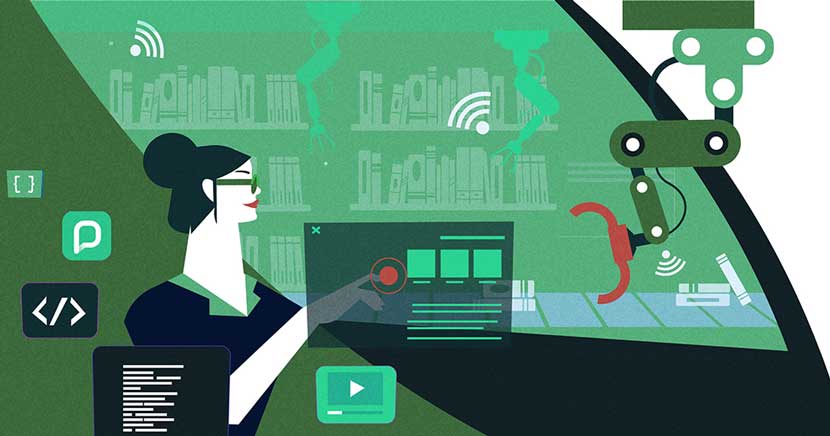It’s no surprise that libraries were able to pivot so quickly to serve their neighborhoods during the pandemic as The Atlantic puts it, the library has always played a critical role as second responder in times of community crisis. As any librarian or library patron well knows, the library is so much more than a source for snagging the latest Liane Moriarty — it’s a hub for learning, a place to build community, and an open door to all.
During COVID lockdowns, that last item on the list was challenged, but libraries quickly adapted. The Kota Government Public Library in Kota Rajasthan, India, started a WhatsApp group to easily and quickly connect patrons to digital resources. In the State of Arizona, public libraries installed external wireless access points to share reliable, free internet with the public, even while its doors were closed. The Richland County Library, meanwhile, set up porta-potties outside its downtown locations for the homeless community to use.
And now, as things are starting to open up again in many countries around the world, libraries are pivoting once more — though not exactly back to business as usual, with demands for health and safety measures higher than ever among an understandably nervous population and new government guidelines.
Even as vaccination rollouts gain momentum and a semblance of pre-COVID life returns, there’s no denying that the pandemic will change the way we engage with each other and with libraries for years to come. Health precautions and safety protocols will be taking on a new importance, and new expectations of social distancing and physical interaction will linger among certain demographics, even once mandates are lifted.
The pressure is on for librarians to evolve their spaces and think critically about their roles as community leaders, all while taking actions to protect individuals from specific diseases. Here’s what safety at the library may look like in our new post-pandemic world.
See also:
Emphasizing digital on every level
Even before the pandemic, libraries were increasingly omnichannel, offering digital content across a variety of platforms. The closure of physical branches only amplified the convenience and efficiency of digital access, and as we work to maintain comfortable social distancing in locations going forward, it’s going to play a pivotal role.
Libraries may want to think beyond just digital materials to digital courses, workshops and events that continue to bring people together from the comfort of home.
Reconfiguring branch layouts to meet safety measures
To accommodate concerns about close quarters, libraries may consider shifting layouts and floor plans to accommodate better flow and plenty of open space. In one Architectural Digest story, architects musing on the future of design noted that expansive, open spaces will enable and encourage guests to spread out.
Whether that’s a whole-sale renovation, rearranging the stacks, or shifting seating in the study area, adapting the physical space could be key to soothing nervous patrons. There are added benefits here, too, even for those who aren’t as wary: an improved general flow that decreases congestion, lowers noise levels, and enhances the patron experience.

Embracing touchless experiences
Curbside pickup was offered by many libraries through the pandemic, and there’s little reason to stop this service now. Offering this touchless experience reduces physical traffic inside the library while still connecting patrons with materials that may not be digitally accessible.
Libraries may also wish to consider touchless solutions for technology — such as using a gesture or motion to open an automatic door, rather than touching a handle or button — to keep physical touchpoints to a minimum.
Limit library attendance
Reducing the amount of people in a space is key to creating comfort for those library patrons who will have lingering concerns about COVID, or for those who are now used to a more solitary library experience. Traffic can be slowed down intentionally by implementing ticketed or pre-registered visits. Once people are actually in the space, browsing or researching, libraries can increase the amount of wayfinding signs and tools to help manage the flow throughout the rooms.
Decentralize the library experience
Low-touch kiosks, pop-up locations, and bookmobiles are just some of the suggestions that came out of a Gensler survey about ways to decentralize library experiences. These sort of small-scale models of library service reduce the number of cross-patron interactions and have the added benefit of connecting librarians with their communities more directly — win-win.
There’s so much the public will rely on from libraries going forward — from books to programming to social services and safety protocols — but the return to normal starts with creating a space that feels right for everyone.
Want to learn how PressReader can help your library go digital to reduce physical touchpoints? Learn more about PressReader for Libraries here.







